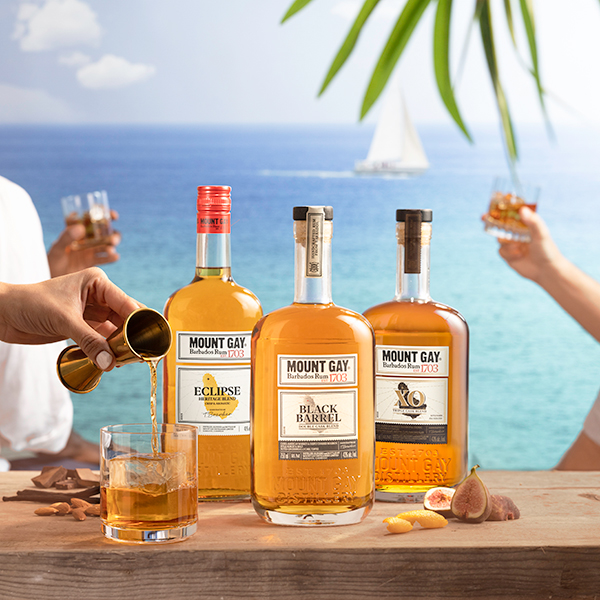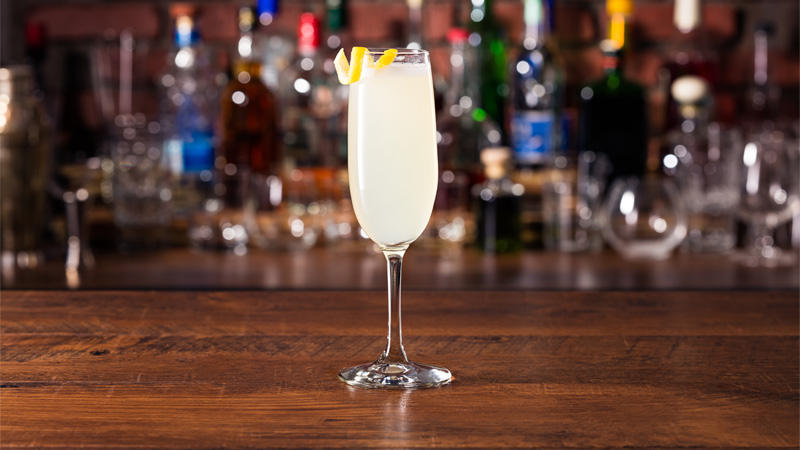In some bubbly cocktails, the sparkling wine is more about festivity than flavor. Orange juice masks middling Prosecco in a Mimosa, for example; and Aperol dominates the Spritz.
The French 75, however, typically calls for capital-C Champagne. To understand why, and how to make the most of any bubbly budget, we asked the experts. Here are five dos and don’ts for making excellent French 75s at home.
What to do when making a French 75
Use brut strength.
“I recommend using high-quality brut Champagne to stay true to the cocktail’s French heritage,” Jason Santos, food and beverage manager at Navio in the Ritz-Carlton, Half Moon Bay, says. “There are a lot of great sparkling wines out there, especially in California… but when it comes to the French 75, I always recommend using Champagne.”
Why does it matter? Firstly, consider your proportions. There’s three times as much sparkling wine as any other ingredient. Dry Champagne also increases your chances of maintaining balance. Gin has delicate flavors, and you want your citrus and sugar to stay in check.
All that being said, Champagne is expensive. If this all sounds a little rich for your blood, you can absolutely opt for Cava or a California sparkler with low residual sugar. Just be sure to stay dry.
“It’s much easier to dial in the quantity of added sweetener to suit yourself or your friends when you’re not starting with a wine that already brings too much sugar to the party,” explains Cameron Shaw, head bartender at Lot 15 in NYC. “A good glug of high(ish) quality sparkling wine will cover a multitude of sins.”
Squeeze fresh citrus.
Many bottled and jarred lemon juices have additives that can quickly overpower a cocktail. Squeezing lemons as you go guarantees your French 75 will be bright and balanced.
“Squeeze fresh lemon juice and just smell it next to a pasteurized, bottled juice; you’ll never go back,” Shaw says. “Besides, you’ll rarely need 12 or more ounces of lemon juice before bottled juice expires. Buying four lemons is the less wasteful choice, and a win-win.”
Consider Cognac.
Like many other classic cocktails, the French 75 was originally a Cognac vehicle. If you have an open bottle of XO lying around, swap it in for the gin. The resulting cocktail is richer and “rounder,” with honeyed flavors instead of herbaceous notes.
What to avoid when making a French 75
Ice goes in the shaker, not in the glass.
To make what bartenders call the “base cocktail” for this drink (industry-speak for everything except the sparkling wine), combine gin, lemon juice, and simple syrup in a cocktail shaker with ice. Shake to combine, and then filter into the flute or whatever vessel you’ll be using to serve.
Under no circumstances should you put ice in your glass. It will dilute the flavors of the drink and quickly kill the effervescence of your Champagne.
Don’t “top” with Champagne.
Oftentimes, when you build a sparkling cocktail in the serving glass, you add bubbles last and stir. Shaw recommends starting with Champagne and then straining in your mixed gin (or Cognac), lemon juice, and simple syrup.
“The cocktail is more dense than the sparkling wine and it will do some mixing itself as it falls through the wine,” he says. Plus, the less you stir, the more carbonation it retains. No drinker in history has ever complained their French 75 had too much sparkle.


